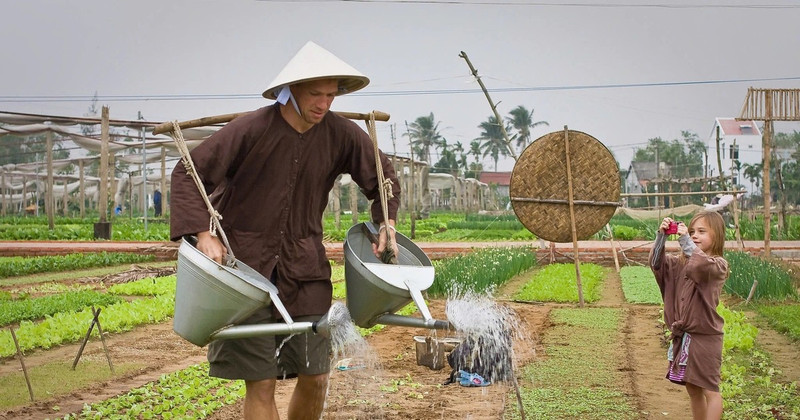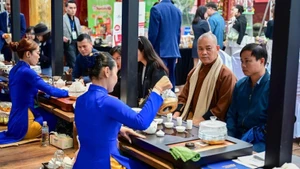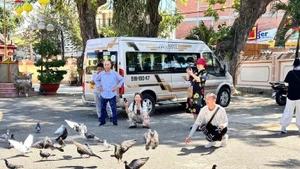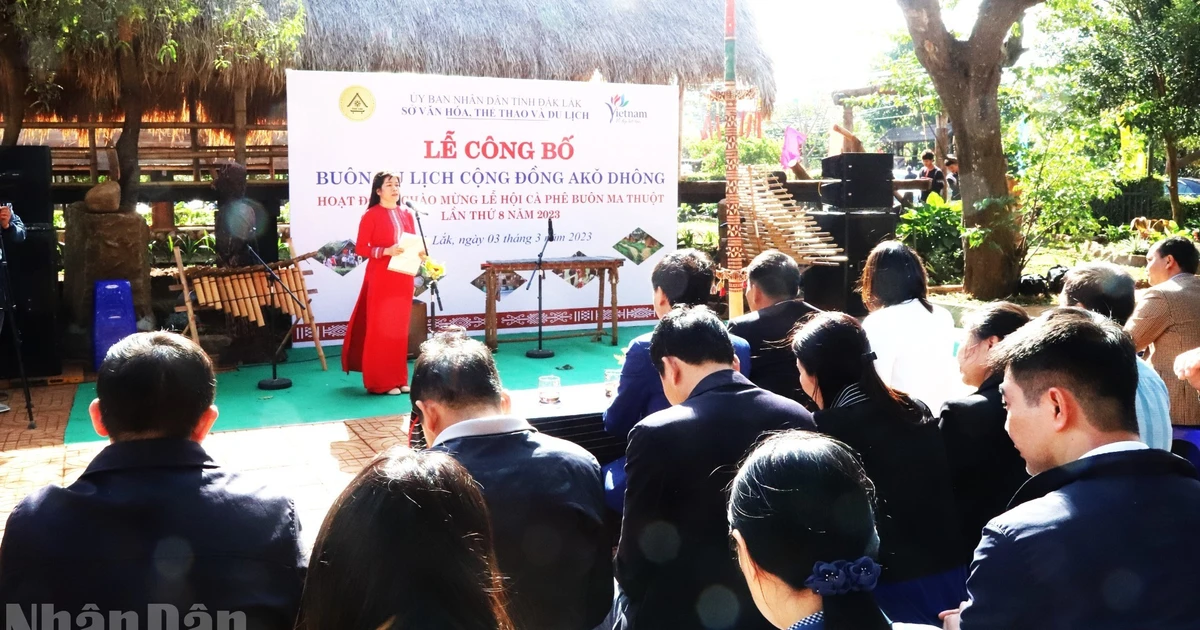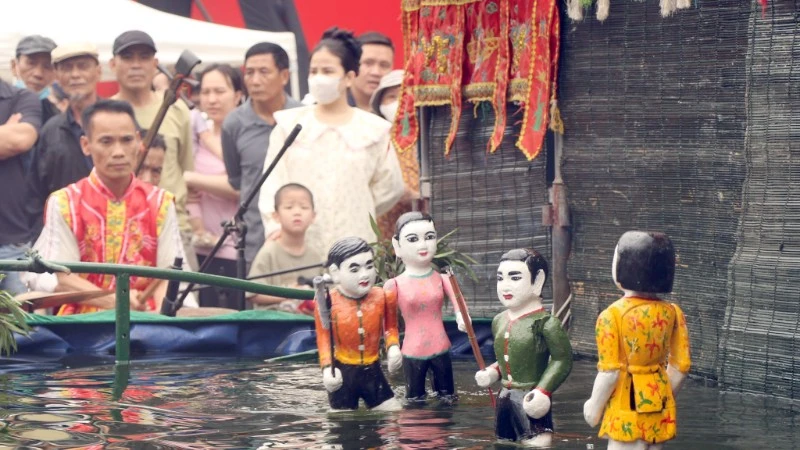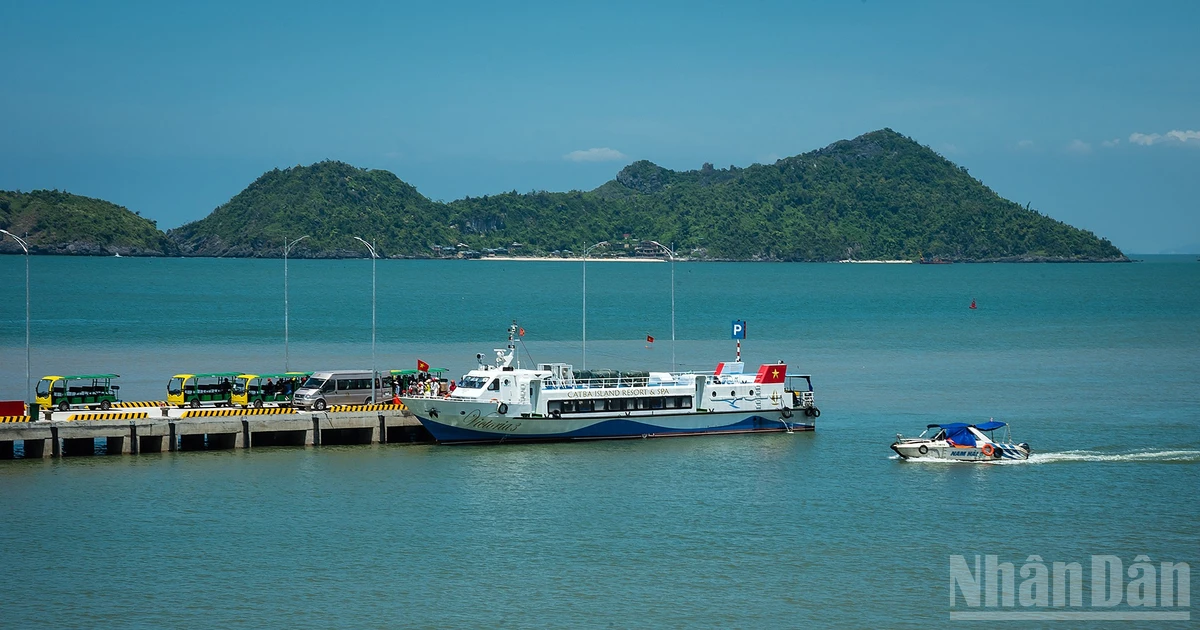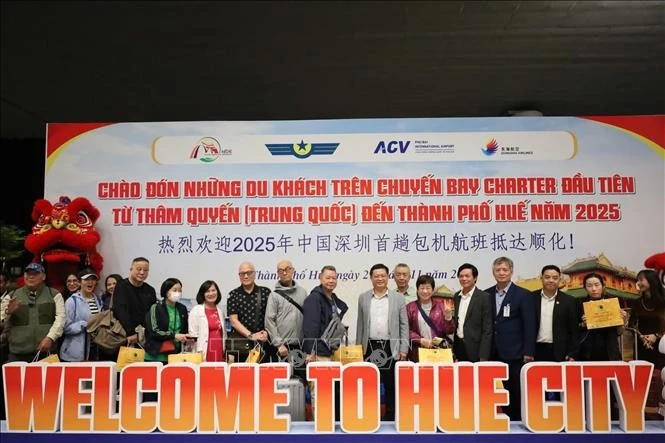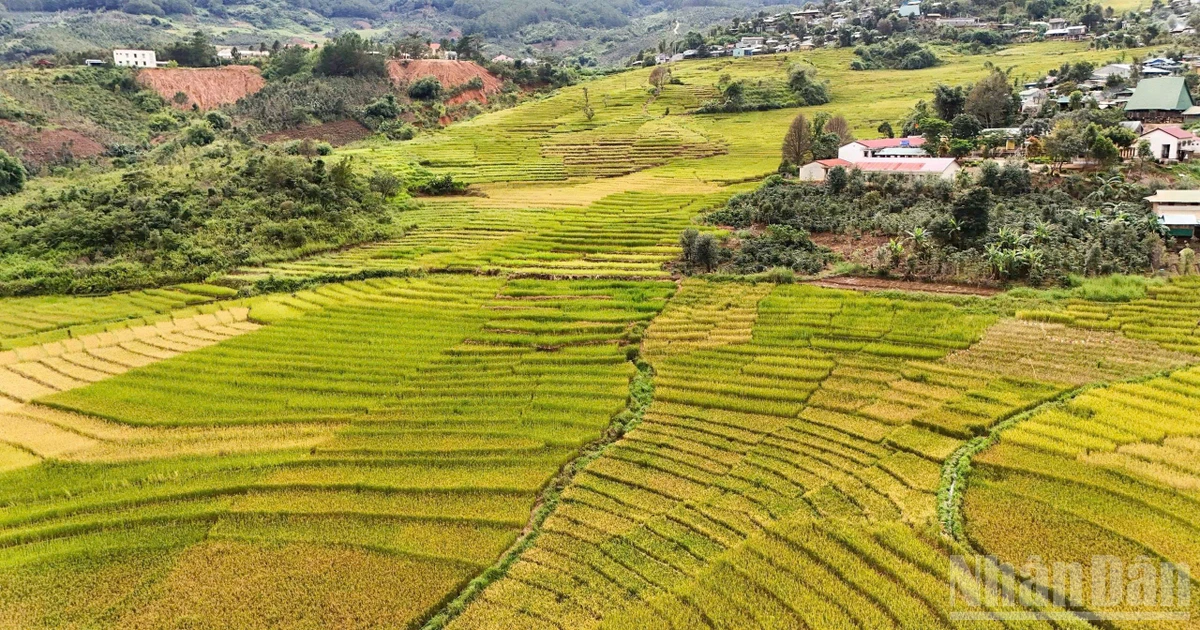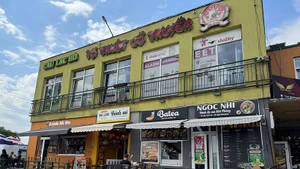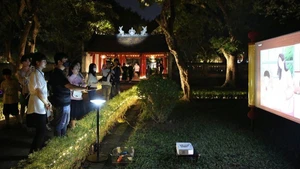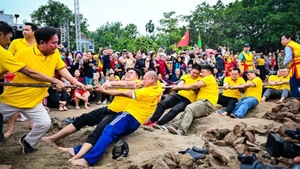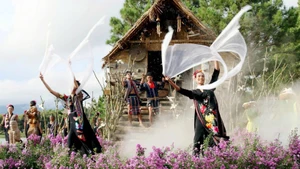"Spending money" to get "dirty"
At Lo Bau Ceramic Centre, the only place that still preserves the traditional "lo bau" kiln, which has been an integral part of Bat Trang pottery in Gia Lam District, Hanoi, for centuries, visitors can explore Ban Xoay Studio and participate in the experience named "I Become an Artisan". Here, they can knead clay, shape and decorate their pottery, place it in the kiln, and eagerly await the final product. Then they get to take their handcrafted piece home—all for a service fee of just 100,000 VND.
According to Luong Manh Hai, manager of the Lo Bau Ceramic Centre, it welcomes up to 500 visitors per day on weekends—six to seven times the number on weekdays. While it was not the first to introduce such experiences, Lo Bau has become one of the most successful models, seamlessly blending the historical narrative of the nearly forgotten traditional kiln (wood-fired, consisting of five interconnected domes resembling overlapping seashells) with the dream of tourists to become artisans for a day.
If you have the chance to visit Ha Thai, a traditional lacquerware village in Duyen Thai Commune, Thuong Tin District, Hanoi, "Dung Di Studio"—run by renowned artist Tran Cong Dung—is a must-visit destination.
He updates his Facebook page daily with images of international visitors meticulously attaching eggshell inlays and proudly showcasing their handmade lacquerware plates. A warm partnership with a travel agency has brought around 300–400 visitors per month to his studio, helping to promote lacquer art—Vietnam’s magical traditional craft—to the world.
The World Travel Awards has honoured Vietnam as the "World's Leading Heritage Destination" for the fifth time. Additionally, Vietnam secured a trio of prestigious titles including Asia's Leading Destination, Asia's Leading Heritage Destination, and Asia's Leading Nature Destination.
The foreigners could not hide their awkwardness but were delighted to carry watering cans and sweat under the sun while tilling the soil and planting vegetables as part of the "A Day as a Farmer" experience. They then learned to harvest vegetables and cook my Quang (Quang noodles) and banh xeo (crispy pancakes). This service plays a crucial role in bringing vibrancy to Tra Que Vegetable Village in Hoi An City, Quang Nam Province. Tra Que has preserved its unique traditional organic farming methods since the 17th century and has been recognised as a "National Intangible Cultural Heritage" under folk knowledge and traditional crafts. The combination of maintaining this heritage with on-site tourism services has made Tra Que a particularly beloved destination for international visitors. In 2024, Tra Que was honoured by UN Tourism as the "Best Tourism Village in the World 2024".
Not only do foreign tourists prioritise creative experiences in traditional craft villages, but they are also increasingly eager to spend money on strenuous, hands-on labour experiences—messy, exhausting, yet novel and unfamiliar challenges that they rarely encounter in their everyday lives. Even the most adverse natural and social conditions can be turned into advantages if tourism products are developed creatively and intelligently. A prime example is Tan Hoa, located in Minh Hoa District, Quang Binh Province, which was named the "Best Tourism Village in the World 2023" thanks to the innovative idea by the Institute for Sustainable Tourism Development (STDe): "Turning Central Vietnam's storms and floods into a tourism product". Tan Hoa has since become an impressive model for climate-adaptive tourism, transforming the annual threat of storms and floods into a unique attraction that draws in experience-seeking visitors.
Gold mine with endless reserves
Creative tourism allows travellers to develop their creative potential through hands-on experiences, exploring destinations, and meaningful connections with local communities. This form of tourism maximises the tangible and intangible cultural values of the host community, offering visitors a wide range of engaging activities.
In practice, creative tourism is often mistaken for experiential tourism because both emphasise interaction with residents. However, experiential tourism is a more passive process, focusing primarily on living and working alongside locals without a strong emphasis on learning about their culture. In contrast, creative tourism is an active process of discovery and learning, where visitors are not just consumers but also co-creators of the tourism experiences they engage in.
Creative tourism leverages the knowledge, experiences, and life skills of local communities, making it difficult to replicate or "mass-produce" in other locations. As a result, it offers travellers unique and exclusive experiences.
This also provides opportunities for regions without geographical or natural advantages to attract tourists by highlighting their historical and cultural values, as well as their ability to innovate and create distinctive experiences.
It can be said that from regional specialities, culinary excellence, and indigenous beliefs to traditional crafts, folk tales, and farming methods—by simply observing the surroundings, delving deeper, and expanding perspectives, one can create a truly unique and distinctive tourism product that is impossible to replicate.
The concept of "play to create" by artist Tran Cong Dung has laid the foundation for a unique tourism product, fostering the development of tourism in Ha Thai, a traditional lacquerware village.
The tour to Duyen Thai Craft Village has created an opportunity to bring international visitors to two renowned craft villages in the commune: Ha Thai Village, known for its traditional handmade lacquerware, and Phuc Am Village, famous for its votive paper offerings.
In one afternoon, visitors are introduced to the techniques and artistry that define these two crafts. They participate in hands-on workshops, visit production studios, explore exhibition spaces, and experience some of the most fascinating steps in creating exquisite handicrafts.
"Finishing my lacquer plate and applying gold leaf onto a beautifully crafted paper horse were the most memorable moments of my trip", shared Bjorn Anderson, a delighted Swedish tourist.
On several online travel forums, it is evident that creative tourism experiences leave a lasting impression on international visitors to Vietnam.
Shannon Crawford, a traveller from Canada, shared photos of her duck-herding experience in a small village in Phong Nha, Quang Binh Province. She learned to sway her body, quack loudly, and toss feed while surrounded by hundreds of noisy ducks.
Meanwhile, Enrique Canelles Corell from Spain excitedly joined rice threshing and grass cutting with locals in Mai Chau, Hoa Binh Province. According to him, it was the most memorable experience of his two-week journey through Vietnam’s northern mountainous provinces.
The year 2024 marked outstanding achievements in tourism, as Vietnam welcomed 17.5 million international visitors and 110 million domestic travellers, nearly matching the record levels of its "golden era" in 2019.
There is strong confidence that prioritising creative tourism development linked to Vietnam’s rural areas is a sustainable and high-potential direction—one that will help Vietnam’s tourism industry step into 2025 with even greater success.
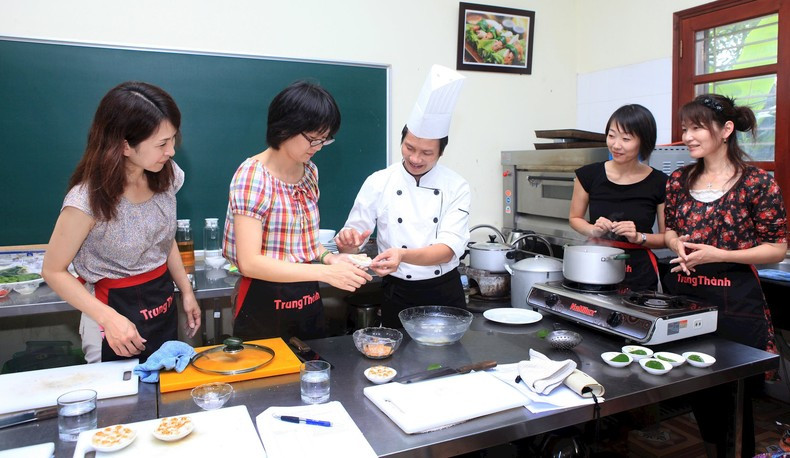 |
| Teachers from Hoa Sua Technical School of Economics and Tourism instruct international visitors in preparing traditional Vietnamese dishes. (Photo: Anh An) |
